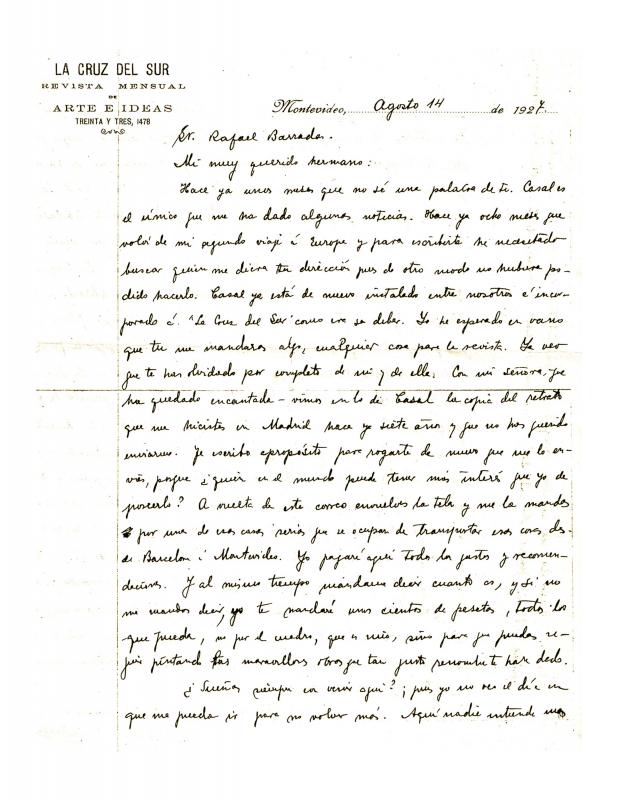In this text, Joaquín Torres García (1874–1949) refers to the Uruguayan landscape artists with contempt, praising Rafael Barradas instead for being “a Uruguayan artist as a European, therefore, an authentic artist.” Two years prior, Joaquín Torres García, had written El descubrimiento de sí mismo and that constant “finding,” in the sense of transforming and updating his vision of things, that is what he valued of the young Barradas, as well as the lack of formulas and academic affiliations which he had removed from his work.
It was around the period when Joaquín Torres García bestowed singular importance to the intuition of the artist as the instrument capable of isolating “the absolute,” “the ethereal” of the things that are to be collected in the work. In a way, in this note, he already defines the fundamental principles of his later constructivist doctrine by affirming not only the distancing by the artist of all logical representation of the visible, to place himself in a purely visual artistic plane. He also affirms that objects may have representation, as long as, they are presented as symbolic substances, such as “immaterial wind gusts.”
Joaquín Torres García confessed to not knowing the artistic environment in Montevideo, although he did recognizes having received news on the new generation of artists stating, stating “in my country, you see, there are no longer paintings on those horrible things, now there is orientation [...] and much better if the bourgeois art of Anglada and Rusiñol has been left behind [...], and better if you can think freely.” Possibly, in these paragraphs Joaquín Torres García was referring to the work of Pedro Blanes Viale, that had been greatly influenced by the Catalan Spaniards Santiago Rusiñol and Hermenegild Anglada Marasa. The link between Torres and Blanes emerged in 1912, from the moment the latter organized the Uruguayan shipping to the Brussels Pavilion (for which Joaquín Torres García had created a mural painting).
[For further reading on Barradas, please refer to the ICAA digital and the following texts: Barradas (doc. no. 1243461) and “Barradas el uruguayo” (doc. no. 1197352) written by Manuel Abril, “Barradas pintor de eternidad” by Artur Perucho (doc. no. 1243392), “Carta a Rafael Barradas” by Alberto Lasplaces (doc. no. 1250919), “De la Tragedia de la Imagen [Barradas]” (doc. no. 1225969) and “Rafael Barradas” by Vicente Basso Maglio (doc. no. 1243440), “Emoción ante Barradas” by Cipriano Santiago Vitureira (doc. no. 1218884) and “En torno a Barradas” by Clotilde Luisi (doc. no. 1227809)].








